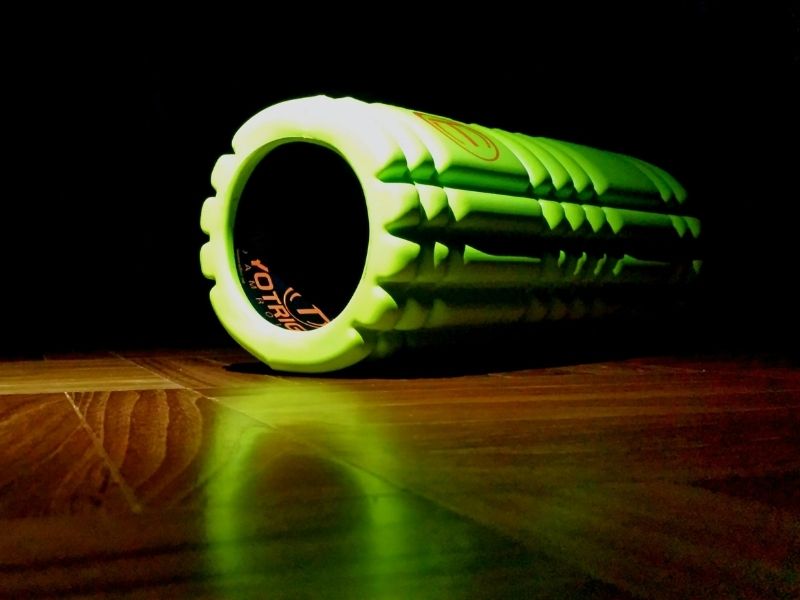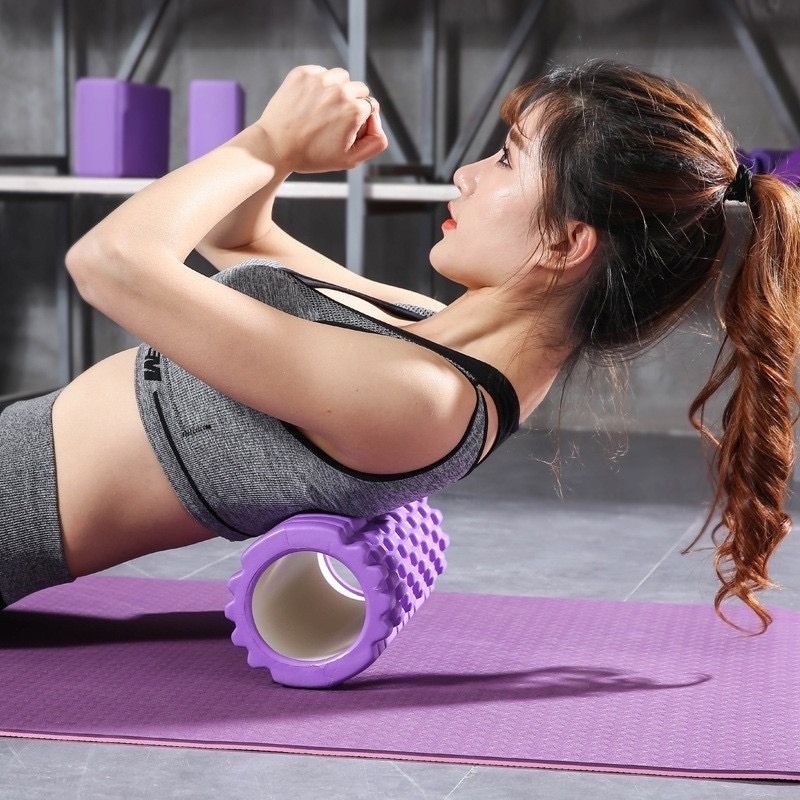Your body feels like a trainwreck. Muscles locked in knots are tender to touch, which makes you wonder why you subjected yourself to a gruelling HIIT workout yesterday. Since massages are a no-go these days, you can remedy the pain with foam roller exercises! Quick, easy, and inexpensive, foam rollers have become the tool of choice to recover from workouts or when your back needs stretching after a long day at work.
What Is A Foam Roller?
Foam rollers are long cylinder-shaped apparatuses. They come in different lengths, densities, and surface textures. Some foam rollers have ridges all over them for you to administer targeted massages, while others are smooth on the surface that provides even pressure. Foam rolling, which is the act of using foam rollers, is also known as a “self-administered myofascial release” (SMR). The process lets you use your own body weight, precisely controlled to help stimulate and relax your muscles. Yes, it can sometimes hurt during foam rolling. But it hurts so good.
Not sure how to use it properly? Here are six foam rolling moves you can do for each area of the body.
Use These Foam Roller Exercises To Massage Your Sore Muscles
Upper Back
Due to long hours in sedentary positions, stiff shoulders and poor postures are common ailments plaguing office workers. Unsurprisingly, lengthy hours on a laptop plus bad posture equals a recipe for aches and pains. Besides, slouching also leads to headaches, poor sleep, neck pains, and fatigue. However, you can prevent all of these by committing to a schedule of foam roller exercises. The video above teaches you to untangle muscle knots and tension on your back. It’s important to not rush when doing these exercises because it takes time for muscles to soften.
That said, it’s equally important to have office furniture that keeps your posture in check. Just to name a few, an ergonomic chair with ample back support and a height-adjustable desk are essential in workplace ergonomics. Don’t forget to move your legs too; a slow walk to the pantry for coffee is always good.
Related: 5 Ergonomic Chair Recommendations For Better Posture
Lower Back
Unlike the upper back where you can apply pressure to almost all areas, foam roller exercises for the lower back requires a delicate approach. First and foremost, you shouldn’t roll directly on the lumbar spine, which is home to a network of ligaments and highly-sensitive nerves. What you can do instead is get into a side-lying position, and gently roll the muscles in that area. This way, you get relief through your lower back without the risk of hurting yourself.
As with all back ailments, you can avoid lower back pain by adopting good habits. For instance, keep a good posture when standing or sitting down, avoid lifting heavy objects, and get enough sleep. Strength and flexibility may also help relieve lower back pain and prevent it. Yoga and Pilates are just a few of the ways to strengthen your core and muscles around your hips.
Glutes
Tight glutes cause pain in your hips and back, so stretching them out is essential. Healthy glutes help to loosen up stiff legs while supporting the strength and stability of your lower back. As shown above, this foam roller exercise is simple and takes less than a minute to complete. Start by sitting on the foam roller before rolling back and forth in motion. You can hold your position at a sensitive area where it’s tender to touch, which is likely a muscle knot or spasm.
More often than not, common causes of tight glutes happen while working out. This includes poor form, not warming up before exercising, and not stretching after. Hence, make sure you don’t rush into exercising, especially if it’s a high-intensity routine. Take time to warm up. Try using resistance bands, which are tools for strength building.
Legs
Leg day got your thighs and calves feeling hot and bothered? Foam roller exercises can help. They release muscle tension in the hamstrings, quads, and calves, which ultimately relieves back pain. At under 11 minutes, the routine above is the longest one on this list, but it’s necessary as our legs are often neglected during recovery. You’ll be switching between poses in this routine, so expect more movement, and don’t be surprised if you work up a sweat. To prevent yourself from slipping off, place a yoga mat under the foam roller.
Sore legs are a pain (literally) to deal with as they can restrict movement and have you walking side-to-side. But there are ways to avoid them. First, gradually increase your running or workout intensities in small increments instead of overexerting yourself. Second, wearing compression clothing may prevent muscle micro-tearing. Finally, don’t underestimate the importance of a cool-down.
Lats
Lats is the abbreviated term for latissimus dorsi, a large muscle located on the upper body that connects your arms to the back. At its core, lats support the spine but they also improve arm movement and posture. Like other major muscle groups, lats get sore and tired when they’re overworked. More commonly, it’s upper-body strength exercises like pull-ups and weight-lifting that vigorously utilise lats.
Foam rolling lats is easy. Just place the foam roller under your arms, near the armpits. Then, roll back and forth. Slowly get comfortable with the rolling because it’ll hurt a little. Once this foam roller exercise becomes bearable, you can then hold at sensitive points for a targeted massage. Otherwise, if you can’t stand the pain, heat pads can help with relieving lats soreness as well.
Neck
https://www.youtube.com/watch?v=D6DJ6_FLAAw
We’re all guilty of spending too much time looking down at electronic devices. Whether it’s at the dinner table or crossing the street (please don’t), this unhealthy obsession with smartphones and tablets is stressing our necks out. Text neck (or also called tech neck) is a real and valid concern! Neck pain, forward head posture, reduced mobility of the neck and shoulders are all text neck symptoms. Thankfully, with proactive steps, you can prevent text neck.
The video above shows a foam roller exercise that directly eliminates muscle stressors in the neck region. Like a pillow, place the foam roller below your neck and gently twist your head from left to right. Slowly and gently, let the weight of your head sink into the foam roller, and you should feel a relaxing massage-like sensation around your neck.
Easy Yet Helpful, Foam Roller Exercises Are Essential For Muscle Recovery

No matter if you’re a 9-to-5 salaryman or an active fitness enthusiast, we can all benefit from foam roller exercises. Additionally, as the pandemic continues to bound us at home, a foam roller provides a sense of relaxation and stress relief from shouldering our daily responsibilities. Its affordability also means you can purchase different variations without feeling the pinch. So, if you’re currently reading this with a slouched back and achy shoulders, it’s time to jump on the foam roller bandwagon! Don’t forget to stay moving, though.

